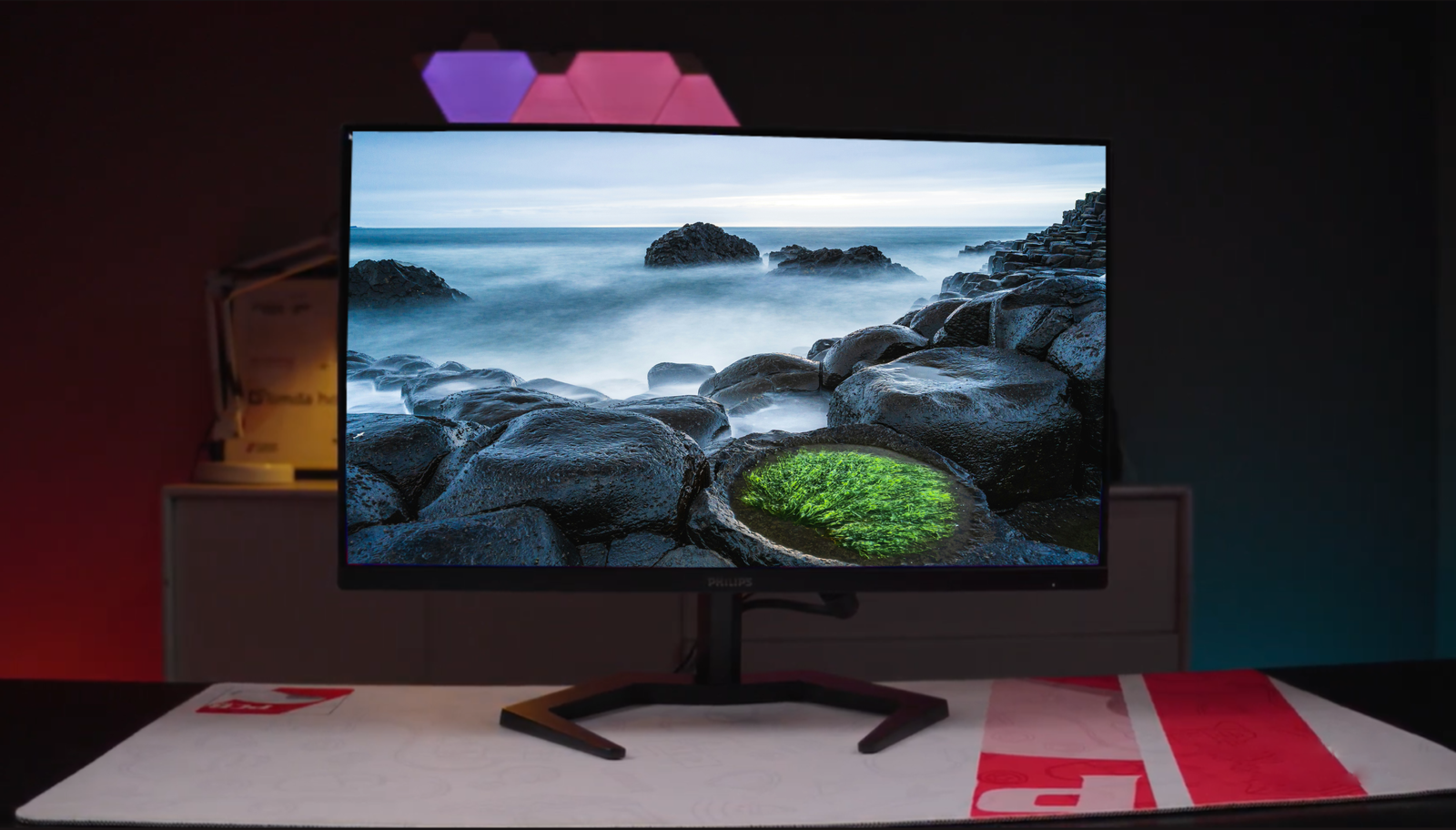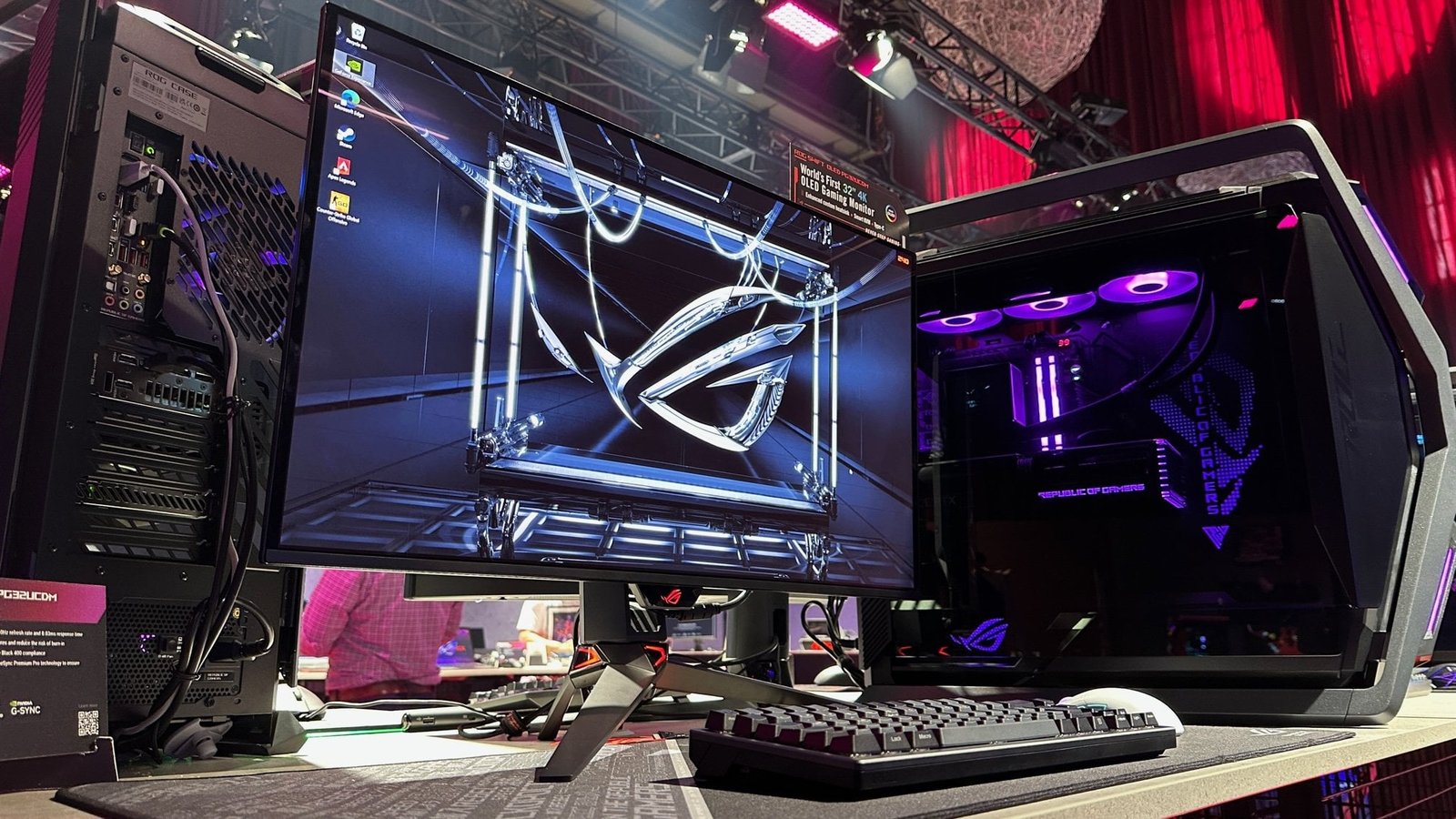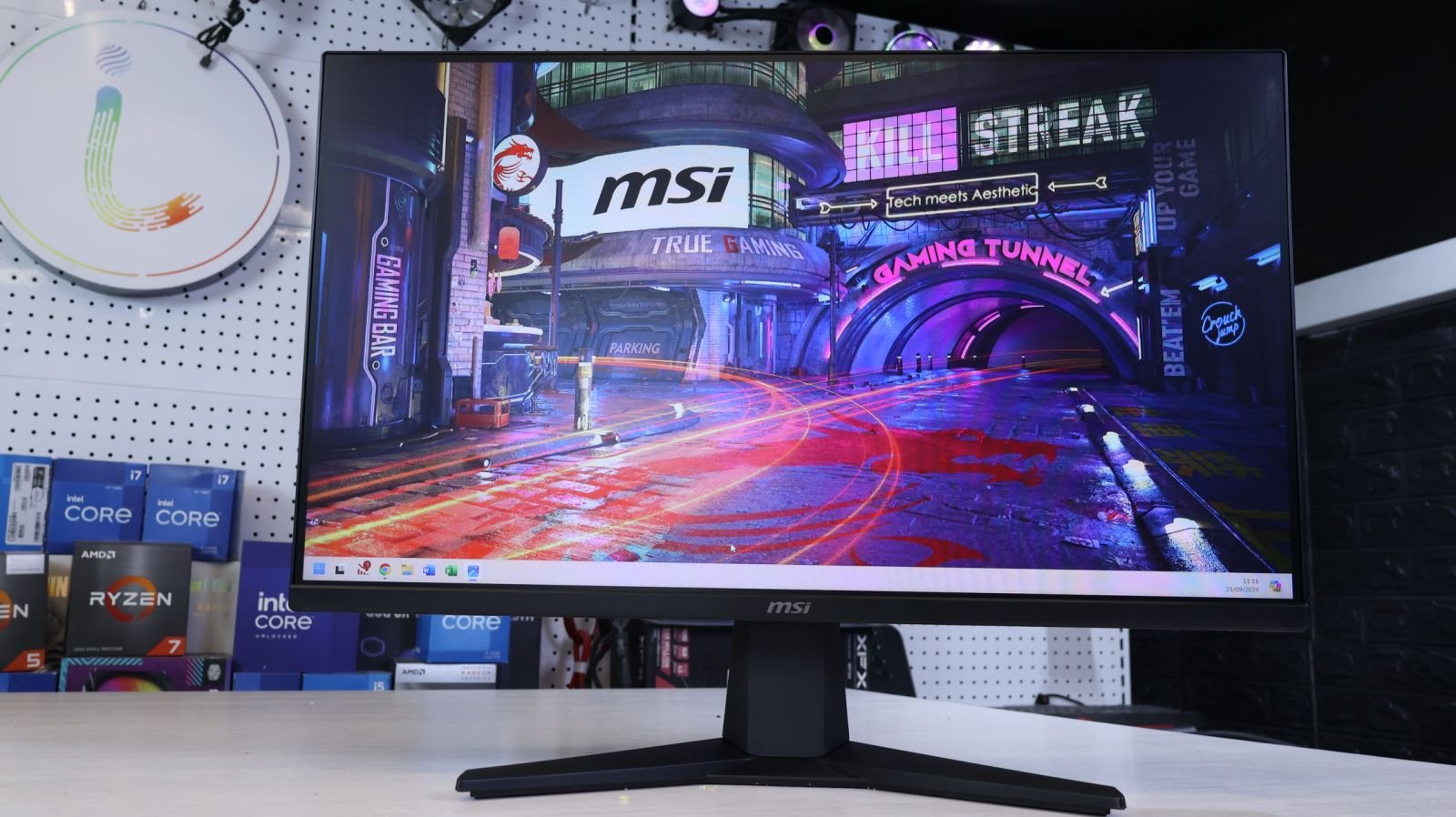Should You Buy It or Ignore It?
There has been a lot of buzz about the MSI G255PF E2 monitor lately. It was recently launched, and many people are asking me about it. Posts in the community are popping up asking whether this monitor with a 180Hz rapid IPS display is worth buying. There are questions about its gaming performance, panel quality, and everything else. People are curious whether they should go for it or not. Today, we’ll conduct a thorough analysis and see if this monitor at the price of 26,500 BDT is worth buying or not. We’ll discuss its strengths, weaknesses, and everything in between. I’m here at Anuradha, and you’re watching Bangladesh. Let’s dive into the story of this micro-star international monitor.
First, I’ll discuss five segments of the monitor. But I want to start with a little jab at MSI. Suppose you go to any store, and you see various monitors on display: MSI, Gigabyte, ASUS, Philips, and others. At first glance, you’ll be impressed by the MSI monitor because it has a 25-inch display, and you might think it’s a great deal for the price. However, when you open the monitor, full of anticipation, you’ll notice that MSI has made a slight misstep. Although it has a 25-inch outer panel, the bezels on the sides and bottom are somewhat thicker than those on other monitors. MSI has done a good job blending this aspect, but if you consider these bezels, the dimensions of the monitor align more closely with those of the Gigabyte or ASUS monitors. The size is pretty much the same.
Therefore, if you think about this, it seems like MSI has played a tricky game because it might look like a smart move. But how smart? You’ll see when you turn it on. I just wanted to throw this little jab at MSI. Besides this, we have a lot to discuss regarding build quality. This monitor is one of the best with robust build quality. It’s entirely plastic, and MSI has maintained a beautiful aesthetic in the design. It has the MSI logo in the middle, a dragon logo on the back, and follows a stripe design. The stand, although made of plastic, is very robust, and the base plate is quite heavy.
Plus, the stand features routing space for cables. Another significant advantage is that this monitor has all the adjustment features—you can tilt it 5 to 20 degrees, swivel it, and adjust the height. This is helpful for those who work long hours or game on it, as they can set it to a comfortable position. You can also pivot it vertically or horizontally. These features are beneficial for anyone who works long hours or codes.
Now let’s talk about the IO ports. This monitor has one DisplayPort and two HDMI ports. Plus, you can get 180Hz on all ports, which is a good thing. There’s also an audio input port, which may or may not be useful. I was hoping for USB ports like those found on Gigabyte monitors, but they’re not included. It’s fine, though. The most significant plus point is that this monitor has two built-in 2-watt speakers. I was surprised at how well these speakers performed. When I listened to music, I found the sound to be loud and reasonably decent. It had a bit of bass, so while it’s not top-notch quality, it’ll serve you well for casual use. So, I must give MSI credit for the build quality.
Now, let’s discuss the display quality. We analyze every monitor using the Spider X Pro, so we used it to calibrate this display. First, it’s essential to note that this is a 24-inch display with a 180Hz refresh rate and Full HD (1080p) resolution. We found that the monitor covers 99% sRGB, 77% Adobe RGB, and 79% DCI-P3 color space. This is reasonably good. When we tested the brightness, they claimed it would reach 300 nits, but we measured around 275 nits in the center, and the contrast ratio was 1,700:1.
A few days ago, we released a video comparing MSI, specifically the Gigabyte G242, and ASUS VG249Q3 monitors. When we compared this monitor with the Gigabyte G24F, we found that it offered 100% coverage in the P3 color space. However, while testing, I found that the G24F did not reproduce colors accurately. In terms of color reproduction, the MSI monitor can often perform better. It provides a more consistent color experience across various tasks. The display is great for general use, whether it’s for web browsing or gaming. The glossy panel doesn’t create too much distraction, and you can comfortably work on it.
Now, let’s discuss video processing and gaming performance. I found that this monitor handles video processing beautifully. During color testing, it consistently performed well. For gaming, this monitor has proven to be excellent. As we all know, it has a 180Hz refresh rate and a 1ms response time. When I played games recently, the clarity was impressive. The edge safety space, meaning the safety animation, and the response time were all satisfactory.
So, how does it perform together? The video placement effect enhances the image reproduction process. This control is evident, especially when viewing animated text. Consequently, this monitor seems to provide excellent performance. If you’re into FPS gaming or competitive gaming, you’ll find that it delivers a solid experience.
In conclusion, the MSI monitor is worth considering at the price of 26,500 BDT. If you feel it meets your needs, you should consider it. Please share your thoughts on this review.
Thank you for your time!




